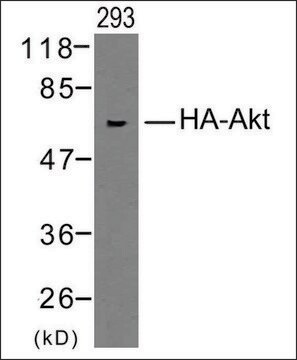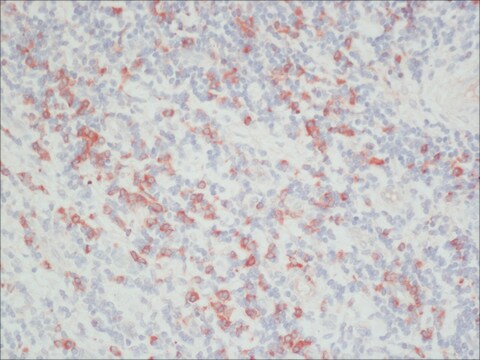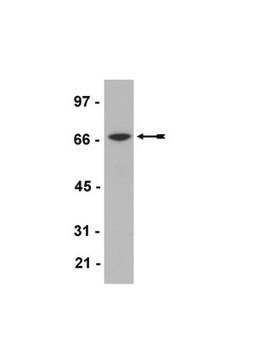12013819001
Roche
Anti-HA-Peroxidase, High Affinity
from rat IgG1
Sinonimo/i:
antibody
About This Item
Prodotti consigliati
Origine biologica
rat
Livello qualitativo
Coniugato
peroxidase conjugate
Forma dell’anticorpo
purified immunoglobulin
Tipo di anticorpo
primary antibodies
Clone
clone 3F10, monoclonal
Forma fisica
lyophilized (clear, colorless solution after reconstitution)
Confezionamento
pkg of 25 U (25 μg)
Produttore/marchio commerciale
Roche
Isotipo
IgG1
Sequenza dell’epitopo
YPYDVPDYA
Temperatura di conservazione
2-8°C
Categorie correlate
Descrizione generale
Specificità
This epitope is also recognized in fusion proteins regardless of its position (N-terminal, C-terminal or internal).
Immunogeno
Applicazioni
- Use Anti-HA-Peroxidase, High Affinity for the detection of HA-tagged recombinant proteins using: ELISA
- Western blot
Nota sulla preparazione
Working concentration: The working concentration of conjugate depends on application and substrate.
The following concentrations should be taken as a guideline:
- Dot blot: 50 mU/ml
- ELISA: 25 mU/ml
- Western blot: 50 mU/ml
Ricostituzione
Rehydrate for 10 min prior to use.
Altre note
Non trovi il prodotto giusto?
Prova il nostro Motore di ricerca dei prodotti.
Avvertenze
Warning
Indicazioni di pericolo
Consigli di prudenza
Classi di pericolo
Skin Sens. 1
Codice della classe di stoccaggio
11 - Combustible Solids
Classe di pericolosità dell'acqua (WGK)
WGK 1
Punto d’infiammabilità (°F)
does not flash
Punto d’infiammabilità (°C)
does not flash
Certificati d'analisi (COA)
Cerca il Certificati d'analisi (COA) digitando il numero di lotto/batch corrispondente. I numeri di lotto o di batch sono stampati sull'etichetta dei prodotti dopo la parola ‘Lotto’ o ‘Batch’.
Possiedi già questo prodotto?
I documenti relativi ai prodotti acquistati recentemente sono disponibili nell’Archivio dei documenti.
I clienti hanno visto anche
Il team dei nostri ricercatori vanta grande esperienza in tutte le aree della ricerca quali Life Science, scienza dei materiali, sintesi chimica, cromatografia, discipline analitiche, ecc..
Contatta l'Assistenza Tecnica.















